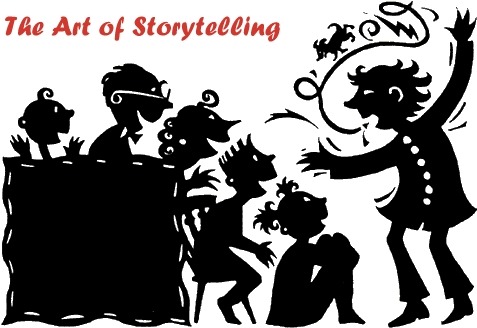I am sure when you saw this blog title; you were quickly thinking about your childhood stories. The favorites, the inspiring and those which always helped you fell asleep. The bed time stories, the lesson driven stories and those which inspired us and instilled values which are still with us. Stories are amazing, they are relevant, they are believable and they are always remembered.
What makes a ‘story’ interesting? Is it the content or the message? It is the narrator.
The story teller – is simply an amazing person who has mastered the art of Storytelling. Did you know that storytelling is an art; or you believe that it is a technique?
Can we learn ‘The Art of Storytelling’?
Storytelling is an art but here I am trying to take it as a very effective technique of communication that if told well can make the message easy to understand and remember. A story teller uses the listener’s brain as a canvas to paint the picture through words which involve a message and hence a learning. To become a good public speaker it is a must to learn and master the art of storytelling as stories not only cuts the age barriers between the speaker and the audience it also keep them interested in the communication.
When I planned to write about Storytelling – to learn this art as a communication technique, I had so much to share with you all. And that’s why I planned a series on storytelling and here we start.
In this series I’ll explain the basics of storytelling, the technique to learn this art and will share how to master the art of storytelling.
What is Story Telling?
Storytelling is an art of using words and actions to encourage the imagination of the listener in order to convey the story/ event interestingly.
It is like empowering imagination to make it more relevant to allow the message to get engraved.
How to tell a story?
Beginning:
“The beginning is the most important part of the work. -Plato”
This is the first step of storytelling wherein the story teller sets the stage and introduces the various characters of the story. Usually storytellers start the story with phrases like “Once upon a time.. or I want to tell a story..” and the storytellers pause to gather his thoughts. Storyteller uses this time to take his audience to the imaginary world where they can see the various characters themselves.
Beginning is important as that defines and mostly decides the interest levels of your audiences.
Example: Once there was a Rabbit and a Tortoise. They had an argument that amongst them who is faster.
Main Plot/Body:
This is the second part of the story where the storyteller builds the story on the conflicts between the various characters and how the conflict gets resolved.
Here the listener feels emotions like anxiety and curiosity, the interest levels rose as they want to know what happens next. It is like planning a Training Module which doesn’t gets boring in the mid-way.
Example: They decide a race…Rabbit takes a lead…Rabbit sleeps under the shade…Tortoise keep on walking…Tortoise wins the race.
Conclusion:
It’s not necessary to always conclude the story. Let listeners go away thinking about the story and draw their conclusions. But it is always recommended to suggest the take away points, the lessons learnt and the knowledge gained.
Example: Slow and steady wins the race. Giving up is never an option.
So think about your favorite childhood story and cherish the lessons you still practice.

